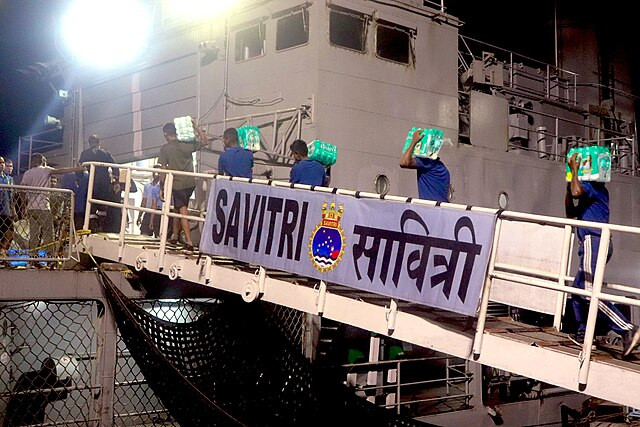More than 2,700 people have died and thousands more remain missing following a powerful 7.7-magnitude earthquake that struck Myanmar on Friday, as rescue efforts are hampered by civil conflict, collapsed infrastructure, and limited access to remote areas. Myanmar's military-led government has warned the final death toll may exceed 3,000.
Myanmar's junta chief Min Aung Hlaing said Tuesday that 4,521 people were injured and 441 remained missing. "Having lived through the terror of the earthquake, people now fear aftershocks and are sleeping outside on roads or in open fields," an International Rescue Committee worker in Mandalay said.
The quake, Myanmar's most severe in more than a century, struck around midday and leveled buildings across central and northern parts of the country, including Mandalay, its second-largest city. The United Nations said 50 children and two teachers died when a preschool collapsed. Over 10,000 buildings were destroyed or severely damaged, the UN Office for the Coordination of Humanitarian Affairs reported.
Aid groups say shelter, food, water and medical supplies are in critical shortage. "In the hardest-hit areas ... communities struggle to meet their basic needs, such as access to clean water and sanitation," the UN said. Rescue efforts are further slowed by damaged roads, downed power lines, and communication outages.
Myanmar's ongoing civil war, sparked by the military's 2021 coup, has complicated efforts to reach those most in need. Rebel-held areas remain inaccessible to most international organizations. "Myanmar's military has a longstanding practice of denying aid to areas where groups who resist it are active," said Joe Freeman, a researcher at Amnesty International. "It must immediately allow unimpeded access to all humanitarian organizations."
The junta has declared a national week of mourning and is coordinating foreign relief through tightly controlled military channels. The International Committee of the Red Cross said telecom disruptions have hampered aid delivery and coordination.
In Naypyitaw, Myanmar's capital, rescuers pulled a 63-year-old woman alive from the rubble early Tuesday-more than 90 hours after the quake-offering a rare moment of hope beyond the 72-hour window during which survival is statistically most likely.
In Bangkok, where tremors caused skyscrapers to sway, rescue teams are still searching the debris of a 30-story building that collapsed. "There are about 70 bodies underneath ... and we hope by some miracle one or two are still alive," said Bin Bunluerit, a volunteer rescue leader.
Thirteen people have been confirmed dead at the Bangkok site, with 74 still missing. Thailand's national death toll stands at 20. Bangkok Deputy Governor Tavida Kamolvej said scanning equipment detected six human-shaped figures beneath the debris, though no signs of life were recorded.
Thai authorities have launched an investigation into the building's structural integrity. Preliminary inspections revealed substandard steel components, according to the Ministry of Industry. "The government has launched an investigation into the cause of the collapse," officials said.
Dozens of monks are also feared trapped beneath collapsed monasteries in Myanmar, where the Buddhist-majority population was especially vulnerable in rural areas with limited emergency infrastructure.
While rescue teams from China, India, Thailand and Russia arrived early, a U.S. aid team had not yet reached the country as of Tuesday night. State Department spokesperson Tammy Bruce rejected criticism that the delay was linked to President Donald Trump's rollback of foreign aid programs. "I would reject the premise that the sign of success is that we are physically there," Bruce said.






